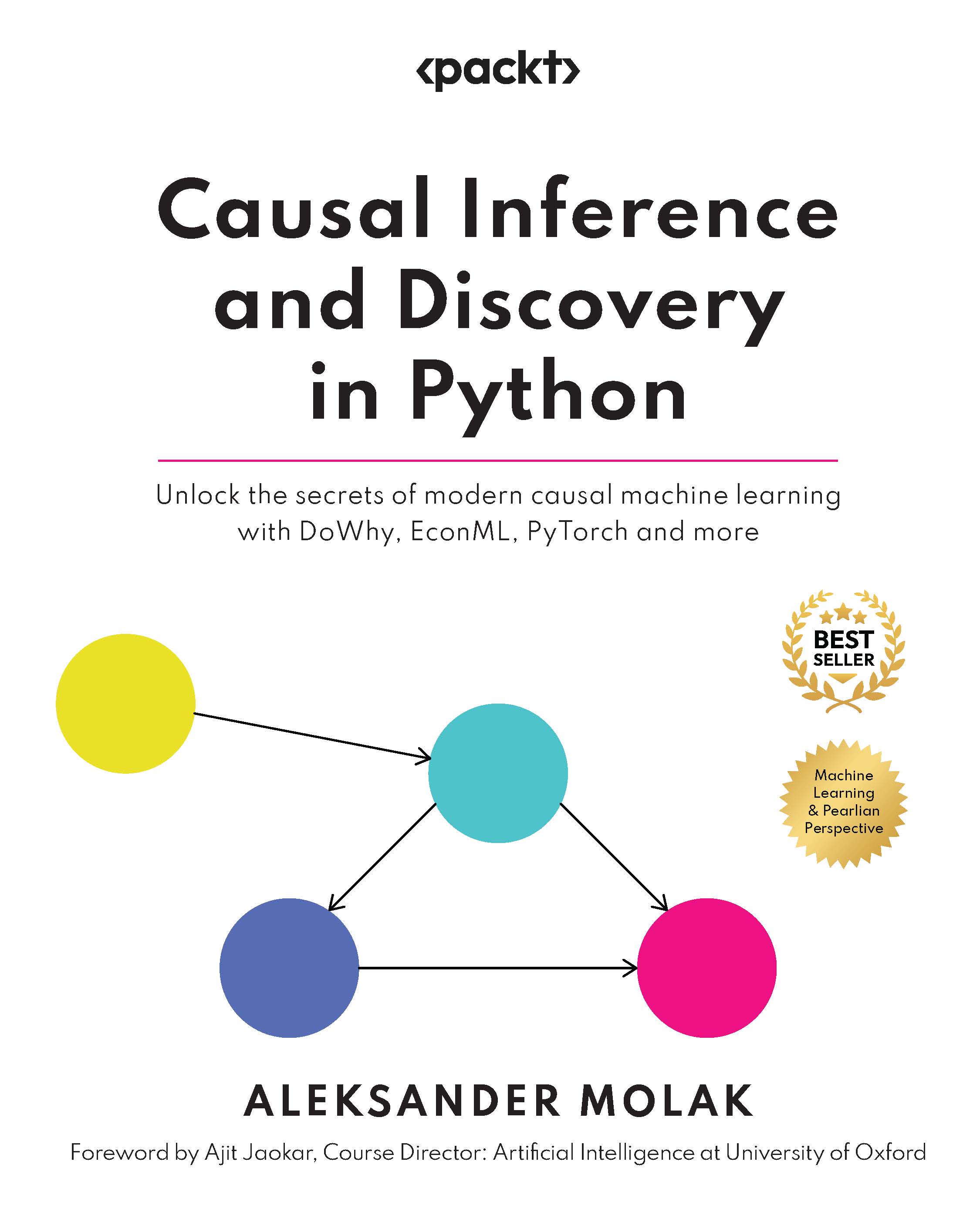Wrapping it up
We learned a lot in this chapter, and you deserve some serious applause for coming this far!
In this chapter, we learned a lot. We started with the notion of d-separation. Then, we showed how d-separation is linked to the idea of an estimand. We discussed what causal estimands are and what their role is in the causal inference process.
Next, we discussed two powerful methods of causal effect identification, the back-door and front-door criteria, and applied them to our ice cream and GPS usage examples.
Finally, we presented a generalization of front-door and back-door criteria, the powerful framework of do-calculus, and introduced a family of methods called instrumental variables, which can help us identify causal effects where other methods fail.
The set of methods we learned in this chapter gives us a powerful causal toolbox that we can apply to real-world problems.
In the next chapter, we’ll demonstrate how to properly structure an end-to-end...
































































